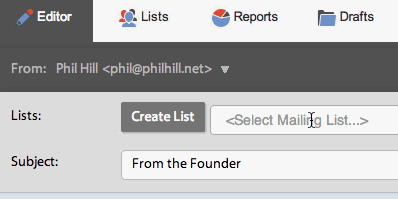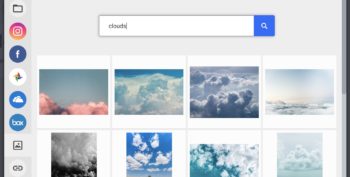Email Marketing
7 Best Practices to Avoid Having Your Email Newsletter Labeled as Spam
Apr 17, 2015
Feel like you’re drowning in spam?
Do you find your email newsletters are being labeled as Spam?
If your emails are being labeled as Spam it means they are not reaching your audience’s Inbox and therefore they’re are being read. It’s a problem that may be happening to the emails you send more than you think.
So do your prospects. Experts estimate that something like 80-90% of all emails sent today are spam. While Spam is technically defined as “unsolicited bulk emails,” and includes communications about diet pills and how to make 1 million dollars in 10 minutes, many legitimate email senders (like you) can fall foul of spam filters.
Does this mean email marketing is out? Absolutely not. In fact, email still has the highest return on investment (ROI) of any form of marketing. If your organization is putting effort into producing high-quality email newsletters and other communications that provide value to your prospects, you’re not spamming. However, the trick is understanding why some emails raise alerts with spam filters, and adopting best practices accordingly.
Follow these steps and you can start beating the spam filters.
In this blog, you’ll learn a few of the most crucial habits to adopt to avoid having your email newsletters land in your contact’s spam folders. From subject lines to sender scores, consider this a crash course in getting your message where it belongs – in the inbox of your prospects and clients.
1. Clean Your List
If your mailing lists contains a lot of undeliverable email addresses (email bounces) you’ll start to get a reputation as a poor sender and the email filters may start classifying all the emails you send as being spam worthy. The more hard and soft bounces you generate with each send, the more you may see dings to your domain’s sender score.
Keeping a clean up to date list and only sending emails to people who have asked to receive them (email “opt-ins”) is the single best way to improve your email deliverability.
HubSpot research has found that, on average, marketing email lists expire at a rate of 25% each year. It’s crucial to clean your list regularly, and often. Services like datavalidation.com will analyze your mailing list and grade the quality of all your email addresses which is a great way to scrub out all the poor email addresses. You can get a free scan on your list to check it’s health. We then then recommend only keeping A & B grade emails on your mailing list.
It’s crucial to maintain a high sender score in order to avoid intensive filtering of your messages; particularly by email hosts with highly sensitive spam filters.Not sure what your sender score is? It’s easy to check via Return Path’s website.
2. Monitor Your Subject Line
While spam filters continue to grow more sophisticated and algorithmically-based, subject line content has long been a major trigger for email filtering. It’s still important to avoid certain words in your subject line that can raise major flags, including the following:
- Price
- Free
- Friend
- This isn’t Spam
- Money Back
- Guaranteed
- 100% Free
- 100% Satisfied
- You are a Winner
- FWD: or Re:
In essence, it’s crucial to avoid any language or words that can make your email sound like it’s a scam or otherwise too good to be true. It doesn’t matter if you’re offering free eBooks or your product is 100% satisfaction guaranteed; it comes across as spammy.
3. Don’t Be Too Enthusiastic
Both your subject line and email newsletter content can’t sound too excitable. Spam filters watch closely for content that could be construed as over-the-top. Avoid the following factors at all costs:
- TYPING IN ALL CAPS
- Excessive exclamation points!!!!
- Too many symbols, like $$$$
- Extremely loud text colors, like bright red
4. Watch Your Calls-to-Action
Did you know the link copy for your calls-to-action is subject to careful scrutiny? While it’s important to create a highly-visible, attractive offer for your email recipients to click on, avoid being too aggressive in how you frame your link. Boris Demaria of WooRank advises against extremely loud colors or excessive exclamation points for link text.
5. Have a Human “From” Address
Your emails should always be sent from an email address associated with a real human being who works at your organization. Emailing without a sender isn’t just a bad practice, it’s a surefire trigger for spam. Almost equally bad is using “noreply@yourdomain.com” or “123456@yourdomain.com,” which are both impersonal and may get caught by spam filters.
Email providers like Flashissue provide a very easy way to change the name you use to use as the sender address for your emails.

6. Avoid Bad Content
Spam filters of major email clients, like Gmail and Yahoo, definitely scan the copy in the body of the email. The following bad contact mistakes can lead to the copy of your email newsletters being flagged:
- Making text the same color as the email background
- Using invalid HTML tags
- Using email addresses or hostnames in link URLs
Deliverability expert Laura Atkins reports that spam filters can be triggered especially easily by senders in industries with a bad reputation, including the financial and loan sectors.
Another thing that can get alarm bells ringing for spam filters is when an email contains just a single image or link and no text content. Your intentions may be genuine but taking a screenshot of brochure or of a web page and embedding it in a bulk email is likely to get your email classed as spam because it’s a common tactic used by spammers. There is also the added issue that if a recipient has the “display images” setting turned off in their email software your email will appear as completely blank.
Make your content genuine, engaging and relevant to your audience and you’ll not go far wrong. There’s a great free tool called Mail Tester that will tell you how likely your email is to be considered spam. Just send your email to an address provided by Mail Tester and they’ll grade the content of your email for you.
Click to view more detail of a real email;
7. Keep Your Email File Size Moderate
Not only are very large images or other content difficult for your prospects to load on slow internet connections or mobile devices, they’re often perceived as questionable by email hosts. Demara recommends 30kb as a good maximum size for visually-rich email newsletter communications.
Email spam filters continue to grow more complex and sophisticated. While the best practices above aren’t a comprehensive depiction of modern email marketing best practices, they can certainly help get you pointed in the right direction.
For more insights, we recommend our blog 3 Steps to Building an Audience for Your Email Newsletter.
Continue reading


